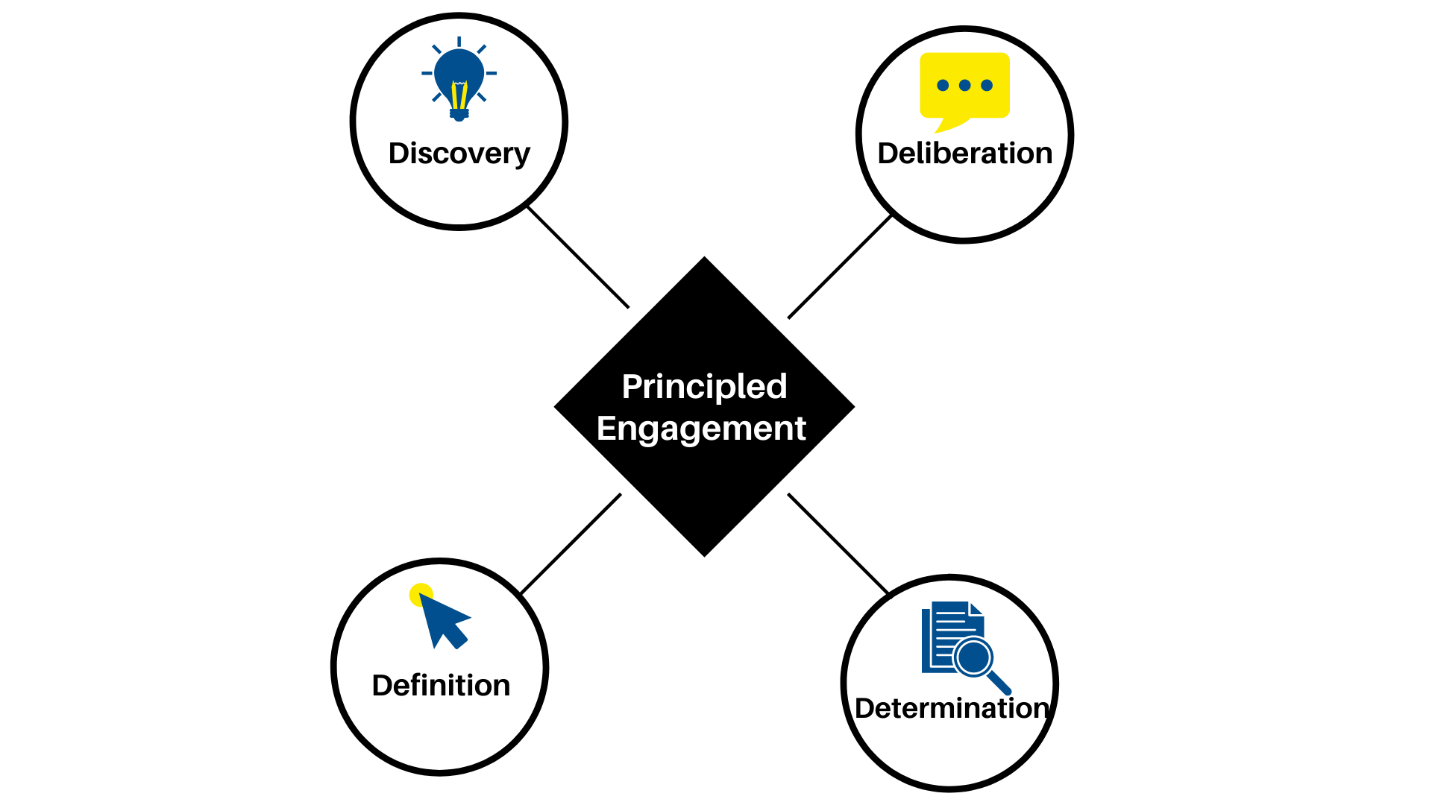Home » Principled Engagement
Introduction to Collaborative Governance
Principled Engagement
Through principled engagement, people with different backgrounds, relations, and identity goals work across their respective institutional, sectoral, or jurisdictional boundaries to address problems and create value (Emerson et al., 2011). The engagement here is regarded as ‘principled’ because it articulates through open and informed communication with a balanced representation of diverse opinions.

Principled engagement occurs over time through the iteration of four basic process elements: discovery, definition, deliberation, and determination.
During the process of discovery, not only do actors in the CGR identify shared interests, concerns, and values among partners, but they also analyse relevant and significant information and its implications for the later development of collaboration.
The definition process characterizes the ongoing efforts to create shared meaning by articulating common purpose and objectives; agreeing on the concepts and terminology used; clarifying and adjusting task expectations; and setting forth criteria employed to evaluate information and alternatives (Pahl-Wostl, 2007).
Deliberation highlights effective communication across sectors. This includes in-depth conversations, constructive self-assertion, and expressing honest opinions and disagreements among actors.
Finally, principled engagement incorporates the processes of achieving joint determinations, including procedural decisions (e.g., setting agendas, formalising a discussion, assigning a workgroup) and substantive determinations (e.g., reaching agreements on final recommendations). Many substantive determinations are made in an ongoing manner.
References:
Ansell, C., & Gash, A. (2008). Collaborative governance in theory and practice. Journal of public administration research and theory, 18(4), 543-571.
Emerson, K., & Nabatchi, T. (2015). Collaborative governance regimes. Georgetown University Press.
Pahl-Wostl, C. (2007). Transitions towards adaptive management of water facing climate and global change. Water resources management, 21(1), 49-62.
Thomson, A. M., & Perry, J. L. (2006). Collaboration processes: Inside the black box. Public administration review, 66, 20-32.
Continue to “Shared Motivation”
© 2022 Centre for Civil Society and Governance at The University of Hong Kong
Except where otherwise noted, contents of this e-study is licensed under a Creative Commons Attribution-NonCommercial-ShareAlike 4.0 License.
![]()


